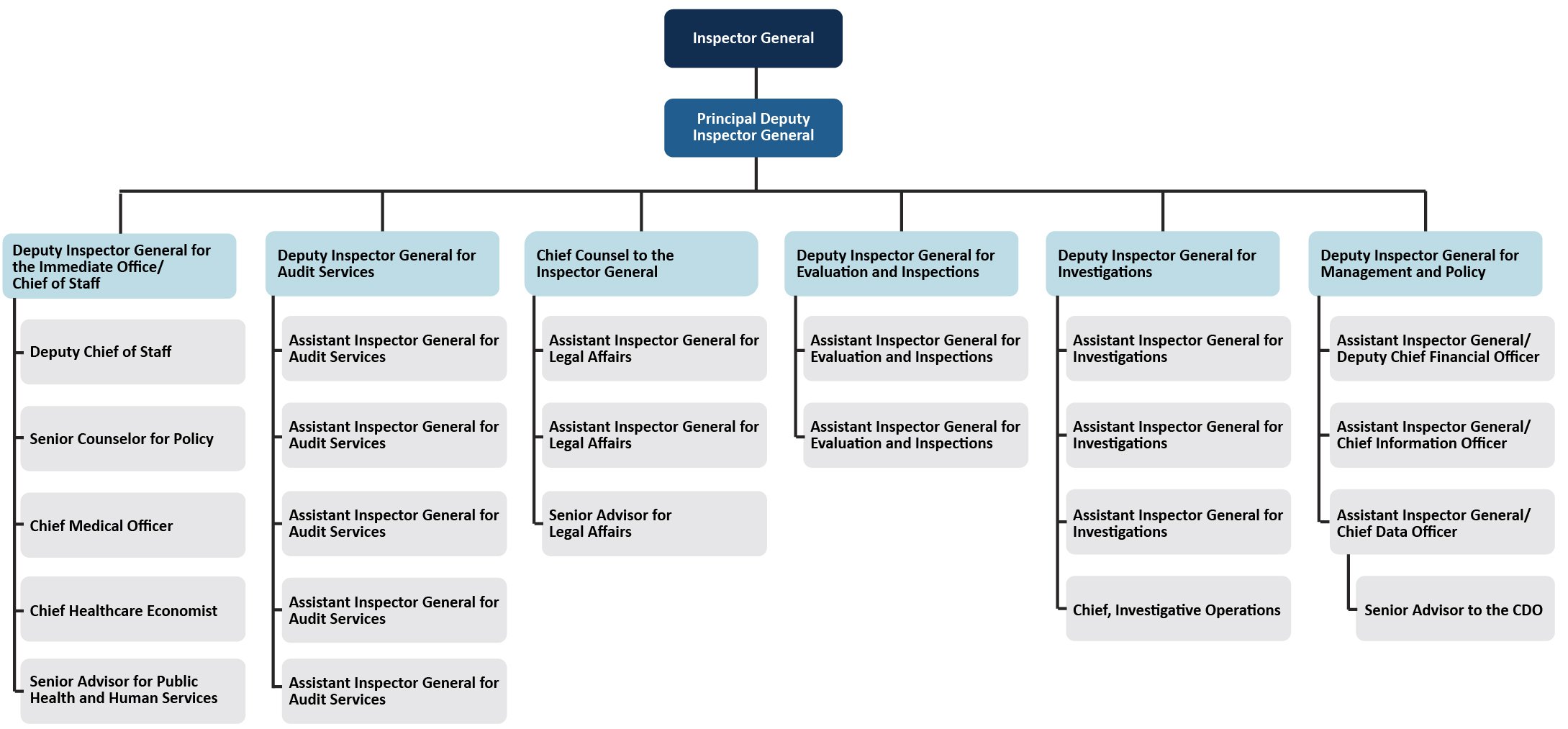Novant Health to Pay $6.6 Million in HIPAA Settlement: Tracking Pixel Controversy – Medriva
What is OIG in Healthcare? – HIPAA Journal
What is OIG in Healthcare?
OIG in healthcare stands for the Department of Health and Human Services (HHS) Office of Inspector General (OIG) – the Office within the HHS responsible for reducing waste, fraud, and abuse in HHS programs and improving efficiency. The Office is the largest OIG in any Federal Department, and employs more than 1,650 auditors, evaluators, and investigators, who are supported by teams of staff with legal, technological, and analytical experience.
The Background to the Office of Inspector General
The Office of Inspector General for the Department of Health, Education, and Welfare (as the HHS OIG was known as at the time) was created in 1976 to “supervise, coordinate, and provide policy direction for auditing and investigative activities relating to programs and operations of the Department”. The Office was also tasked by Congress to detect and prevent fraud and abuse in programs financed by the Department, and to promote efficiency within the Department.
One of the first tasks undertaken by the newly created OIG in healthcare was to establish the OIG HHS Exclusions List as required by the Medicare-Medicaid Anti-Fraud and Abuse Amendments 1977. However, the task of managing the database of individuals and organizations prohibited from participating in federal health care programs grew substantially following the False Claims Act Amendments of 1986 – overwhelming the Office until the passage of HIPAA in 1996.
Subtitle A of HIPAA Title II created and funded the Health Care Fraud and Abuse Control (HCFAC) program, which gave the OIG in healthcare the resources to enforce §1128 of the Social Security Act – “The Exclusion of Certain Individuals and Entities from Participation in Medicare and State Health Care Programs”. Due to the HCFAC program, the OIG in healthcare now excludes more than 2,000 individuals and organizations per year compared to just thirty-five in 1977/1978.
The Expanding Role of HHS OIG in Healthcare
Since its establishment (and the change of name to HHS OIG in 1980), the role of HHS OIG in healthcare has grown significantly. The Office now oversees activities in more than 100 HHS programs, conducts thousands of audits, evaluations, and inspections each year, and provides compliance guidance to tens of thousands of individuals and organizations to encourage compliance with regulations published by HHS agencies such as CMS, CDC, SAMHSA, and OCR. To cope with its expanding role and increasing workloads, HHS OIG divides its work between six sub Offices:
- The Immediate Office of Inspector General, which is directly responsible for the fulfillment of the OIG’s mission.
- The Office of Audit Services, which audits the performance of HHS programs, service providers, and contractors.
- The Office of Counsel to the Inspector General, which acts as an in-house legal counsel to the Inspector General and OIG’s other components.
- The Office of Evaluations and Inspections, which evaluates HHS programs to detect fraud, waste, and abuse and identify opportunities for improvement.
- The Office of Investigations, which conducts criminal, civil, and administrative investigations of fraud and misconduct relating to HHS programs.
- The Office of Management and Policy, which is focused on improving customer satisfaction with, and the reliability of, HHS programs.
Probably the most rapidly expanding role for the HHS OIG in healthcare is cybersecurity. HHS OIG has identified cybersecurity as the top challenge for the healthcare system, and has recently added a Cybersecurity and Information Technology Division to the Office of Audit Services and a Computer Crimes Unit to the Office of Investigations to combat cybersecurity threats within HHS and the healthcare system by fostering enhancements in IT controls, risk management, and resiliency.
Why It Is Important to Understand What the OIG in Healthcare Is
Although the primary role of the OIG in healthcare is to combat fraud, waste, and abuse, and improve the efficiency of HHS programs, the Office also recommends policy changes to agencies within the HHS. When a recommendation is adopted by an HHS agency, it can have a significant impact on the regulations that healthcare providers and their business associates have to comply with. An example of this is the investigation into OCR’s governance of cybersecurity threats.
The OIG investigation is looking into whether the existing Security Rule standards and OCR’s HIPAA audit program are sufficient to prevent and detect cyberattacks, ensure the continuity of patient care, and protect PHI. Although ongoing, the investigation has prompted HHS to publish a Healthcare Sector Cybersecurity Strategy, which not only suggests new HIPAA security standards will be introduced in 2024, but also that compliance with the standards will be a requirement for participation in Medicare.
The post What is OIG in Healthcare? appeared first on HIPAA Journal.
Increase Staff Productivity & Reduce No Shows With Better Patient Engagement
Healthcare organizations of any size can streamline workflows, increase staff productivity, maximize revenue and reduce no shows by up to 90% as benefits of patient engagement technology.
 Patient-centric functionality enhances patient communications with automation, including appointment notification and reminders, online patient scheduling, waitlist management with last-minute cancellation fulfilment, patient experience surveys, and many other features. These can significantly enhance your patients’ perception and experience of your practice.
Patient-centric functionality enhances patient communications with automation, including appointment notification and reminders, online patient scheduling, waitlist management with last-minute cancellation fulfilment, patient experience surveys, and many other features. These can significantly enhance your patients’ perception and experience of your practice.
Typically, HIPAA compliant patient engagement systems integrate easily with all existing practice management software and have a fast return-on-investment.
Surveys Show Patients Appreciate Patient Engagement Technology
Healthcare providers have been slow to adopt communication technology, but according to an Accenture Survey, 60% of patients prefer to use technology for patient-provider communication. This is in part because the Covid crisis altered patient behaviors and expectations of technology usage in healthcare practices. Patients appreciated the more personalized interactions and faster response times that patient engagement technology brings.
 Highlighting the need to prioritize new patient acquisition and loyalty, an Actium survey** says 61% of patients want better patient engagement. 44% of respondents said they don’t regularly see their doctor and 30% said they don’t have a usual source of care, leaving the door open for organizations to register new patients. The consumers interviewed also said that stronger patient engagement will help them go to clinics for preventive screenings and wellness checks.
Highlighting the need to prioritize new patient acquisition and loyalty, an Actium survey** says 61% of patients want better patient engagement. 44% of respondents said they don’t regularly see their doctor and 30% said they don’t have a usual source of care, leaving the door open for organizations to register new patients. The consumers interviewed also said that stronger patient engagement will help them go to clinics for preventive screenings and wellness checks.
Better Patient Experiences
By offering a better patient experience healthcare providers will bring patients into their clinics and keep them coming back. Adding patient engagement to practice management systems enables a clinic to connect with patients in a way that not only engages, but activates, them and makes the patient experience frictionless.
HIPAA compliant patient engagement can be easily added to any existing practice management system to enhance patient communication.
Benefits Of Patient Engagement To Healthcare Providers
 Reduce No Shows – Up to a 90% improvement in missed appointments.
Reduce No Shows – Up to a 90% improvement in missed appointments.- Maximize Revenue – Patient engagement systems automatically fill empty schedule slots and encouraging annual wellness visits generates downstream revenue.
- Improved Productivity & Focus On Patients – Streamlining and automating 24 x 7 communication reduces the burden on front desk, eliminates errors, and enable staff to spend more time on patient care.
- More Patients – Healthcare providers who offer 24 x 7 interaction with the practice attract more patients. Recent studies show that younger patients in particular actively seek out and are willing to switch to healthcare providers that offer better digital interaction.
- Patient Loyalty – Better communication fosters patient loyalty and trust. The added option of post-appointment surveys allow clinics to adapt to individual patients’ needs.
- Works With Existing Practice Management Systems – A patient engagement solution integrates with all existing practice management systems meaning it is simple and fast to add.
Benefits Of Patient Engagement To Patients
 Another Actium survey* highlighted two of the top reasons that patients don’t utilize preventive care as “Making appointments is too much of a hassle” and “I simply forget to make them”. They say 61% consumers surveyed report that they would like to hear more from their doctor.
Another Actium survey* highlighted two of the top reasons that patients don’t utilize preventive care as “Making appointments is too much of a hassle” and “I simply forget to make them”. They say 61% consumers surveyed report that they would like to hear more from their doctor.
Implementing a patient engagement system can have many benefits for patients, including:
- Convenience – 24 x 7 self-scheduling is far more convenient for patients who don’t want to call the clinic when they are busy with work or personal business.
- Self-Care – Automation encourages patients to set appointments and keep their healthcare on track.
- Digital Registration & Forms – patients can fill out forms at their convenience before visits.
Features Of Patient Engagement Technology
Automated Appointment Notifications
- Automatically sends reminders to patients as you or they book in appointments to reduce no-show rates.
- Create a series of two-way customized automatic notifications to confirm and remind patients of upcoming appointments.
- Works seamlessly with existing scheduling software and spreadsheets.
- Integrates with EHRs and EMRs.
- HIPAA compliant and encrypted.
Patient Self-Scheduling
- Patients can book their own appointments 24 x 365.
- Include ‘Schedule Now’ or ‘Request an Appointment’ links in specified notifications and reminders and on your website, social media pages and email newsletters.
- The clinic has full control over when patients can book appointments and how long they need for each appointment type.
Waitlist Management
- Detects cancellations in schedules and automatically fills these vacant spots with people on the waiting list.
Continuing-Care Notifications
- Notifies patients when they are due continuing-care appointments using your scheduling and delivery preferences.
Patient Reactivation
- Identifies patients who are overdue for appointments by monitoring visit history and recall schedules.
- Automatically notifies them to set appointments and keep their healthcare on track.
- Sends reminders to schedule overdue appointments.
- Extra reminders demonstrate to patients you care about them and value their patronage. These reminders can have a significant impact on overall retention rates.
Auto Rescheduling
- Automate the time-consuming task of rescheduling patients after appointment cancellations and no-shows. The auto-rescheduling feature detects these events and automatically contacts patients to get them rescheduled without relying on staff’ intervention.
Fill My Schedule Now
- Maximize revenue by filling empty slots in your schedule. Fill My Schedule Now only contacts patients that match the exact parameters set by the clinic, and those patients can then easily self-book their own appointments.
Digital Registration Forms
- Digital registration enables you to email or text patients a link to a registration form they can fill out at their convenience before visits.
Find Out More
 Find out more about the benefits of patient engagement solutions by filling in a form on this page. You will be contacted by a member of staff from Rectangle Health our page sponsor.
Find out more about the benefits of patient engagement solutions by filling in a form on this page. You will be contacted by a member of staff from Rectangle Health our page sponsor.
You can ask questions, request a demonstration, or arrange a no risk evaluation, all with no obligation.
Since 1983 Rectangle Health has been providing technology solutions exclusively for healthcare organizations. Their fully HIPAA compliant solutions are used by over 60,000 healthcare providers in the U.S and they process over $6 billion of patient payments annually.
The HIPAA Journal has arranged a 10% reader discount on Rectangle’s list price for their patient engagement solution.
By supporting one of our sponsors, you are helping The HIPAA Journal to continue to provide our news service free of charge.
The post Increase Staff Productivity & Reduce No Shows With Better Patient Engagement appeared first on HIPAA Journal.
Improve Patient Satisfaction With Enhanced Payment Options
Offering modern HIPAA compliant patient payment solutions provides a better customer experience for patients, encourages timely payment and is proven to bring financial savings and improved operational efficiency to any size of healthcare practice.
 Adding multiple up-to-date payment options leads to improvements in satisfaction and retention levels. For example, making it convenient for patients to pay from their phones by automatically communicating balances and payment options by text and email, practice staff will spend on average 30% less time on payment collection and posting. Plus the practice will see a significant reduction in its accounts receivable numbers.
Adding multiple up-to-date payment options leads to improvements in satisfaction and retention levels. For example, making it convenient for patients to pay from their phones by automatically communicating balances and payment options by text and email, practice staff will spend on average 30% less time on payment collection and posting. Plus the practice will see a significant reduction in its accounts receivable numbers.
Non-Payment Is Bad For Both Patients And Healthcare Providers
Non-payment is known to be one of the main reasons why patients switch healthcare providers. Patients can become anxious when they owe money and frustrated if they find it difficult to make a payment.
Digital patient payment solutions that can be easily integrated with all existing practise management systems make it more convenient for patients to settle their medical bills. They also bring a wide array of benefits to the practice, such as improved cash flow, reduced AR rates, and staff efficiency.
Recent studies show that younger patients are open to switching healthcare provider to one that offers finance and convenient digital payments.
Features Of Patient Payment Solutions
If you don’t have digital payment options available, consider upgrading to add a variety of choices that make it easier for patients to pay their bills. Some examples include:
1. Contactless Payments
 Contactless patient payment solutions are secure and can protect staff and patients’ health and safety by allowing patients to pay by touching their mobile device or card to a digital reader.
Contactless patient payment solutions are secure and can protect staff and patients’ health and safety by allowing patients to pay by touching their mobile device or card to a digital reader.
Offering contactless also means that if someone has forgotten their wallet, they can still make a payment with Apple Pay®, Google Pay™, SamsungPay® or a digital wallet.
Because contactless payments do not require patients to enter a PIN, swipe a card, or sign for a transaction, they decrease the time patients need to spend at the front desk, reducing queues and allowing your team to focus more of their valuable time on other tasks.
2. Patient Financing
Healthcare providers can encourage patients to seek medical care by offering patient financing as part of an upgraded payment solution. The option of manageable monthly payments empowers patients to access the essential treatment they need.
 Multiple financing options are offered to patients just 30 seconds after applying, and the vast majority get approved.
Multiple financing options are offered to patients just 30 seconds after applying, and the vast majority get approved.
Healthcare providers who offer patient financing will enhance their practice and are helping their patients who may otherwise pay surprise medical bills with expensive credit card debt.
Patient financing can strengthen cash flow and dramatically reduce accounts receivable numbers with zero risk to the practice, while at the same time increasing patient loyalty.
3. Online Payments
 Part of a modern payment solution suite is a secure online payment gateway, allowing patients to pay online 24 x 7. Optimized for mobile devices, it also works with laptops and desktop computers, allowing patients to make payments from home or on the go.
Part of a modern payment solution suite is a secure online payment gateway, allowing patients to pay online 24 x 7. Optimized for mobile devices, it also works with laptops and desktop computers, allowing patients to make payments from home or on the go.
A payment link can be added to your website, to emails, texts, and any other patient communications. This means patients will have a seamless and smooth payment experience.
Being fully integrated with your practice management software payments will be automatically posted to the patient ledger or electronic health records. This reduces errors and helps staff to monitor transactions.
4. Card On File
Card on file is functionality that allows a practice, with consent from the patient, to store their payment information securely and conveniently in a secure HIPAA compliant vault hosted in the cloud. 43% of patients say they are comfortable with automatic payments to avoid repetitive manual data entry of their debit or credit card.
 When patients leave a payment method on file, it means one less step during future checkouts. This can even be done ahead of visits when a patient fills out a digital registration form. The front desk can make the payment for the patient at checkout with no need to dig around for cards and a payment receipt will be automatically sent by email.
When patients leave a payment method on file, it means one less step during future checkouts. This can even be done ahead of visits when a patient fills out a digital registration form. The front desk can make the payment for the patient at checkout with no need to dig around for cards and a payment receipt will be automatically sent by email.
A card update feature checks stored card information and if anything has changed, the payment information is automatically updated in the vault. This saves staff time keeping up with payment information.
The healthcare organization is also protected from chargebacks or legal disputes with card on file agreements that are built in to the system and are kept on file with a patient’s record, and which can be emailed or printed for patients’ own records.
5. Subscription Payments
 Card on file also enables healthcare providers to set up an automatically recurring payment to allow a patient to pay down a large out-of-pocket expense over several months. For many patients, having this interest-free option can make the difference between choosing to avail of medical care or not. This flexible payment option is a highly practical way for healthcare providers to receive more incoming payments and for patients to afford their treatment.
Card on file also enables healthcare providers to set up an automatically recurring payment to allow a patient to pay down a large out-of-pocket expense over several months. For many patients, having this interest-free option can make the difference between choosing to avail of medical care or not. This flexible payment option is a highly practical way for healthcare providers to receive more incoming payments and for patients to afford their treatment.
6. Increased Security & Fraud Prevention
With modern patient payment systems, data is never stored on the premises or servers of a healthcare provider. Instead, the application stores all customer data in a secure, encrypted, electronic vault which is compliant with all relevant standards such as PCI, DSS, and HIPAA. The practice is also protected from the cost of fraud. Risk management experts monitor transactions and maximize security in order to detect attempts at fraud.
Summary Of Benefits To Healthcare Providers
 Streamlining your payment processes with a patient payment solution that seamlessly integrates with your existing practise management systems brings many business benefits while also providing an improved patient experience.
Streamlining your payment processes with a patient payment solution that seamlessly integrates with your existing practise management systems brings many business benefits while also providing an improved patient experience.
- Reduced AR – Dramatically reduces accounts receivable numbers.
- Stronger Cash Flow – Better payment options, including flexible financing means patients are able to pay medical bills immediately.
- More Focus On Patients – Patient payment solutions bring greater staff efficiency allowing them to spend more time on patient care and less time on administration duties.
- More Patients – Practices that offer digital payments bring in more new patients and have higher retention levels.
- Increased Operating Margins – Practices that get paid more quickly and have less bad debts have lower accounting costs and higher margins.
Benefits Of Upgrading Payment Solutions For Patients
Empowering patients to pay bills from anywhere at any time with any internet connected device fosters patient loyalty and trust.
- Empowerment – Flexible and varied payment options mean patients can confidently access the treatments they need.
- Convenience – Multiple payment options provides a better, more convenient customer experience for patients.
- Affordability – Spreading the cost with regular subscription payments or financing allows patients to receive the care they need and budget appropriately.
Find Out More About Patient Payment Solutions
Find out more about patient payment solutions by filling in a form on this page. You will be contacted by a member of staff from Rectangle Health our page sponsor.
 You can ask questions, request a demonstration, or arrange a no risk evaluation, all with no obligation.
You can ask questions, request a demonstration, or arrange a no risk evaluation, all with no obligation.
Since 1983 Rectangle Health has been providing financial technology solutions exclusively for healthcare organizations. Their fully HIPAA compliant solutions are used by over 60,000 healthcare providers in the U.S and they process over $6 billion of patient payments annually.
The HIPAA Journal has arranged a 25% reader discount on Rectangle’s list price for their patient payment solutions.
By supporting one of our sponsors, you are helping The HIPAA Journal to continue to provide our news service free of charge.
The post Improve Patient Satisfaction With Enhanced Payment Options appeared first on HIPAA Journal.
